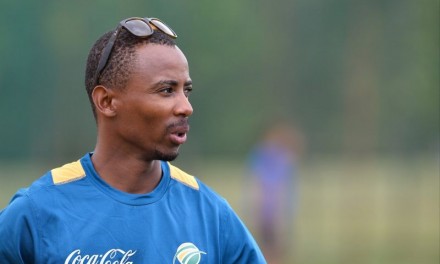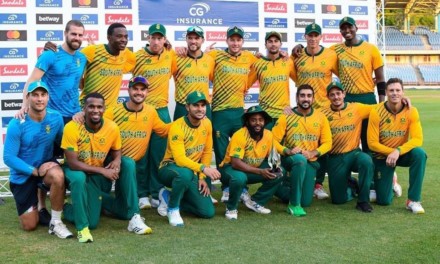There’s a number of ways to improve cricket in South Africa, but I don’t think dropping the franchise system is one of them.
“To improve our Test cricket, we should drop the 6 team Franchise system for the 12-team provincial system to give more youngsters a chance to play longer format cricket at an earlier age and to expose them to the requirements of Test cricket”
I disagree, but let’s take a step back…
Cricket South Africa initially proposed a restructuring of our local cricket scene (which has been recently rescinded).
For those who are unaware, we currently have a two-tier system, franchise cricket, and semi-professional (provincial) cricket. There are 6 franchise teams in South Africa, the Titans, Lions, Cobras, Warriors, Knights and the Dolphins. This is the highest tier of local cricket we have and acts as the ‘feeder’ into the national side.
Each side has 18 contracted players which equates to 108 contracted franchise players. Below these franchise sides, we have our 13 semi-professional sides which act as ‘feeders’ into our franchise teams.
Each semi-professional side has 13 contracted players which equates to 169 contracted semi-professional cricketers (a combined total of 277).
The semi-professional sides are:
1. Eastern Province
2. Gauteng
3. Free State
4. Easterns
5. Boland
6. Kwazulu Natal Inland
7. Northerns
8. Northern Cape
9. North West
10. Kwazulu Natal Coastal
11. Western Province
12. South Western Districts
13. Border
Getting back to the issue at hand, many would argue that we are losing too many youngsters too early in their careers due to their inability to be absorbed by the semi-professional or franchise system ultimately forcing them to either pursue a cricketing career abroad, or a career outside of cricket.
A further argument is that a semi-professional contract is in itself not enough to ‘convince’ or lure players into the system, given the modest nature of its terms and conditions.
What does scrapping the franchise system mean then?
Well, in my opinion, it means the following:
1. It doesn’t equate to more players in the system:
There will be fewer contracted players i.e. From 277 (currently) to 216 if each of the 12 provincial sides under the proposed system were able to offer 18 contracts.
This would imply that the same amount of money that is available for players’ salaries would be shared over fewer contracts which in turn results in the average salary per player increasing.
That does not necessarily mean that each players salary would increase, it means the mean salary will increase. Having said that, is there a financial benefit to CSA if the same amount of money is being spent on wages?
Well yes. Logistically speaking, there will be fewer games played with 12 provincial sides compared to the 6 franchise and 13 semi-professional sides.
This would involve a lot less travel, accommodation, umpiring fees, ground staff fees and administration as a whole and I would go as far as to say that the financial benefit was the main driver behind CSA’s initial decision to restructure the local system.
Even if it were to be at the expense of the quality of South African cricket. In the end, all I can say is that sanity seems to have prevailed….for now at least.
2. The standard of cricket will NOT improve:
Personally, I believe that the best of the franchise system that is competing for a place in the national side, are ill-prepared when they do finally get the Proteas call up.
This isn’t to say they are not quality cricketers, and it is in no way a knock on their individual work ethic, but rather a statement that speaks to the quality of cricket that they are exposed to at a franchise level relative to Test cricket. I believe that right now, the gap is just far too wide.
Before you bite my head off, of course, franchise cricket can’t be the same quality as Test cricket. I understand that, but I believe that not too long ago, each franchise side had at least a couple of Test calibre players who improved the quality of the system as a whole.
Why do I think that the quality seems to have decreased considerably? A couple of reasons really.
Firstly, Proteas players just don’t seem to play any local cricket anymore. Obviously, the fringe players will come out for their respective franchise sides, but the likes of Dale Steyn, Quinton de Kock, AB de Villiers, Faf du Plessis, Morne Morkel and so on, do not or did not play enough franchise cricket compared to the likes of Shaun Pollock, Mark Boucher, Graeme Smith, JP Duminy, Herschelle Gibbs and anyone else from that ‘era’. Simple as that.
Secondly, we have seen an increase in the number of players who have opted for Kolpak contracts who are generally your ’next in line’ type of players i.e. your Kyle Abbotts, Duane Oliviers, and Stiaan van Zyl’s who were top performers at a franchise level, but in and out of the national side during the ‘peak’ of their careers.
The combined loss of Proteas players not playing franchise cricket, former Proteas not staying in the system, and the rapid increase in Kolpak signings has resulted in a ‘softer’ looking franchise system.
We ask ourselves why top-quality batsmen who average in and around that 50 mark at a franchise or first-class level are unable to maintain that level of performance at Test level. We also wonder why they are not really able to convince selectors and fans that they even belong at that level at all.
Having said that, how would this all be affected if the franchise system were to come to an end at the expense of 12 provincial teams?
Because It makes matters worse. Using a practical example, I’d argue that between our 6 franchises, we have only a handful of players who really have the ability to come into the Test side right now and look like they ‘belong’ i.e. Dane Paterson, Beuran Hendricks and Lutho Sipamla.
Beyond those limited few, we have a decent number of franchise-quality bowlers who may or may not develop into bowlers who could start to push for that ‘back-up role’ should an injury arise or if they were selected for the shorter format.
At the same time, they are constantly putting in decent performances for their respective franchises.
The rest of the bowling attack consists of guys who have performed well at a semi-professional level but can often look out of depth when coming up against quality franchise batsmen.
If we were to now take these 24 bowlers (4 bowlers from each franchise) and spread them over 12 provincial teams, what happens to the average quality of each team’s bowling unit? It decreases substantially in my opinion. Do we have 48 quality bowlers in South Africa to fill those 12 teams?
No, I don’t believe so, and more importantly, it does not address my concern that our batsmen are coming into Test cricket ill-prepared to face Test level bowlers.
What is the solution then?
It’s quite easy for me to sit here in front of my screen and criticize each and every aspect of CSA and our local cricket system, but what practical solutions do I have to offer?
My first suggestion, as frustrating as it seems, is to sit tight and see how the Kolpak/Brexit situation unfolds. Best case scenario, we see an influx of some quality cricketers back into the franchise system which will make the world of difference.
I mentioned earlier that each franchise side seems to be sporting at least one or two players who perhaps struggle to cope at that level and it would be these players who would potentially be replaced by the returning Kolpak signings.
It’s not written in stone and their places are in no way guaranteed, but I believe that likes of Simon Harmer, Kyle Abbott, Rilee Rossouw, Hashim Amla, Morkel, Olivier, Leus du Plooy, Colin Ingram Dane Vilas, David Wiese, Wayne Parnell and Van Zyl wouldn’t have too much trouble convincing selectors of their quality.
Right off the cuff, our local batsmen would be exposed to the likes of Morkel, Abbott, Olivier, and Harmer who have all tasted success at Test level.
Would our batsmen score as many runs as they are now? Maybe, maybe not, but I feel fairly confident to say that they would be better prepared to walk into a boxing day Test to face James Anderson, Stuart Broad, and Jofra Archer.
Would our local bowlers benefit from bowling to the likes of Amla, Rossouw, Du Plooy, Ingram etc, yes I think they will.
The margin for error becomes smaller and smaller when you play against top opposition and a lack of discipline from our fringe bowlers at the moment is one of the most alarming issues in my opinion.
Having said that, are we likely to see a massive influx of these players back into the franchise system? I honestly don’t know. My guess is as good as yours.
The ECB will need to decide whether or not to increase the number of overseas professionals from one to two players per side. If that is the case, the Kolpak players might opt to play as overseas professional in county cricket but at the same time being available for selection for the Proteas.
That sounds great on paper, but if we actually stop and take a look at how many of those players would walk into the current national side, only Abbott and Olivier really get me thinking.
South African cricket would benefit far more from having these players playing franchise cricket than they would have them available for international selection.
Secondly, and more practically, I think that CSA is over-egging the pudding with 13 semi-professional sides. I think that needs to be reduced dramatically to around 6-8 and should be effectively operating as a B team to the franchise sides.
For example, I don’t believe that it is completely necessary for the Western Cape to have 3 semi-professional sides (Boland, WP, SWD) ‘feeding’ the Cape Cobras, especially when their individual ‘contribution’ of players to the Cobras is heavily skewed.
Does Natal need an Inland and a coastal side? No, I don’t believe they do.
By cutting the number of semi-professional cricketers in half, you essentially increase the overall quality of that tier, and in turn, the quality of the players that eventually move up to the franchise or national level.
Some might argue that we lose a lot of potential cricketers in doing so but if we’re honest with ourselves and as controversial as it may sound, I believe that the financial gain from scrapping those sides far outweighs the potential loss of the ‘bottom half’ of the semi-professional circuit.
The financial gain could be used to retain top players who may be considering moving abroad, it could be used to bring in international coaches, or simply to improve infrastructure, but at the end of the day, there is a financial benefit that has NOT come at the expense of the quality of South African cricket!
Follow Dan on Twitter and Check out his Website
Disclaimer: Cricket Fanatics Magazine encourages freedom of speech and the expression of diverse views from fans. The views of this article published on cricketfanaticsmag.com are therefore the writer’s own and do not necessarily represent the views of the Cricket Fanatics Magazine team.
Photo: Deryck Foster/BackpagePix











